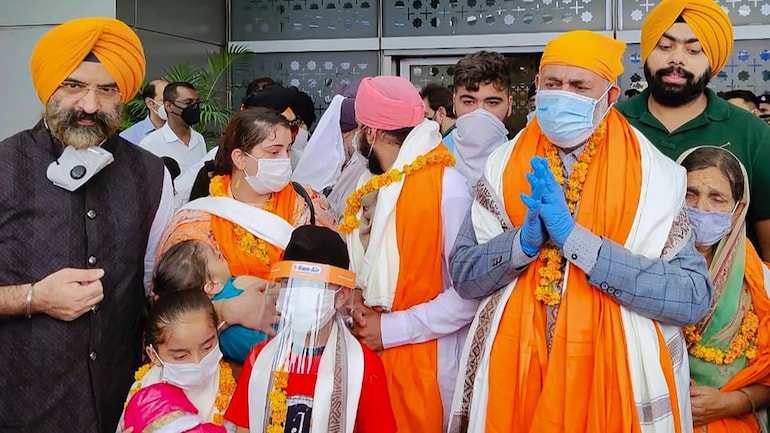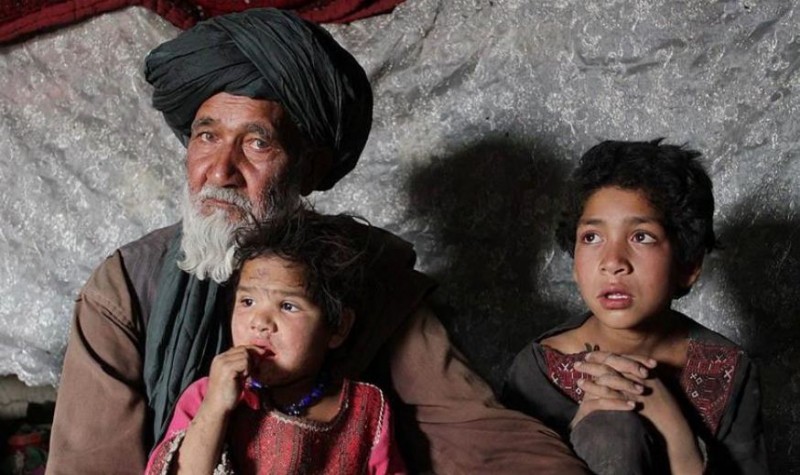As the world witnesses the Taliban takeover of Afghanistan, the nation faces a lot of emigration all around the globe.
The Afghan Sikh community is all set to leave the country and immigrate to India. Indian World Forum along with World Punjabi Organisation and DSGMC coordinated the evacuation of 46 Afghan Sikhs on Monday.
Visuals of three Sikhs with one Saroop of Guru Granth Sahib each over their heads surfaced on the internet. The 46 Afghan Sikhs were escorted to Kabul Airport on Monday by International Forces and were onboarded to IAF aircraft.
Sikhism in Afghanistan and its history
A common belief prevails that the Sikhs in Afghanistan are all immigrants from India. Well, that’s definitely not the truth, Sikhism has been in the region since the 15th century.
According to the book published in 2019, ‘Afghan Hindus and Sikhs: History of a thousand years.’ by Inderjeet Singh; Guru Nanak, the founder of the Sikh religion visited the Khorasan region(medieval Afghanistan) during the fifteenth century.
A research paper published in 2011 by Roger Ballard, an anthropologist showed that the minuscule Sikh population who outlasted the forceful conversion of Buddhists to Islam around the 9th to 13th century later on around the 15th century took teachings of Guru Nanak, who was himself a Khatri.

During the early 16th century, Kabul was a province of Hindustan under Babur’s reign and was called, “Hindustan’s own market”.
Later in 1738, Nadir Shah conquered the region and this was the time when many Sikhs from East Punjab went there to spread the teachings of Sikhism.
Records depict that Bhai Gonda was sent to Kabul to spread the teachings of Guru Har Rai and also built a Gurdwara there.
From the mid 18th to the mid 19th century the Afghans and Sikhs were bitter adversaries and it went on for around a hundred years.
Maharaja Ranjit Singh conquered major portions of the Afghans Durrani Empire during the early 19th century. The Sikhs however lost the Anglo-Sikh wars to the British, even when they had Afghani support.
The late 19th and early 20th centuries witnessed Christians propagandize around the region. Akali Kaur Singh Nihang led the propagation of Sikhism in the Afghan region and established several Gurdwaras during this period.
Diaspora of the Afghan Sikhs
Amir Abdur Rahman Khan’s ‘Reign of Terror’ led to the first-ever emigration of Sikhs and Hindus from Afghanistan during the late 19th century. He executed around one lakh people of the region and the Sikhs and Hindus were left with no choice but to move to India. And these Afghan Sikh people established their Patiala community.
It was not until 1992’s Mujahideen seizure when the major exodus took place. Even before the seizure, the guerilla group attacked some Gurdwaras in the region.
13 Sikhs were killed at a Gurdwara by an armed militant carrying an AK-47 on the holy day of Baisakhi. 17 Sikhs were killed by Mujahideen’s rockets fired at Jalalabad Gurdwara.
The fires on the Gurudwara were intended to seize the city, stated Singh in his book. Over 100 Afghan Sikhs, who were mostly residents, were killed during these six months.

Terrified by the oppression, extortions, and kidnapping the Afghan Sikhs emigrated heavily after Kabul’s invasion by Mujahideen in 1992 and it was only increasing as the Taliban took over in 1994.
According to writings by Singh, more than 60,000 Sikhs and Hindus used to live in Afghanistan around the early 1990s. The numbers decreased to just a thousand, confined to cities like Ghazni, Jalalabad, and Kabul.
Singh even wrote, “Outside these cities, their gurdwaras and mandirs are now illegally occupied by locals of the majority community.
Even within these cities, their houses were forcefully occupied during the turmoil of the civil war and most of them live in gurudwaras and mandirs.”

Roger Ballard mentioned, “The tolerance of diversity which had hitherto been such a characteristic of Afghan Islam rapidly began to evaporate in the face of the hard-line jihadi and fundamentalist attitudes promoted by the Taliban.”
In 2018, 19 Sikhs were killed in a suicide bomb blast in Jalalabad. Later, around March of 2020, 25 people were killed in Guru Har Rai Gurdwara attacks. All of this has led to a major exodus of the Afghan Sikhs.
The immigrants believe that the CAA initiated by the government will help them to enter and also to receive citizenship in India.
Still, around 200 of them are taking shelter at Karte Parwan Gurdwara, which is close to the Kabul airport, and await evacuation.
Also Read: It’s The Americans, Yet Again











